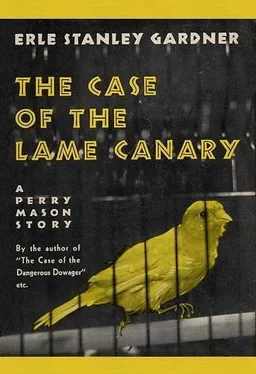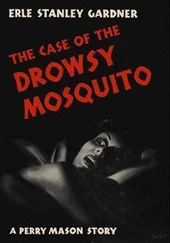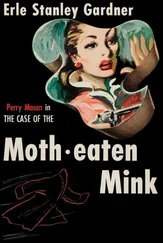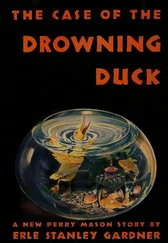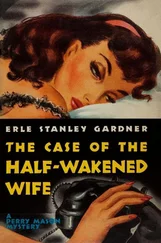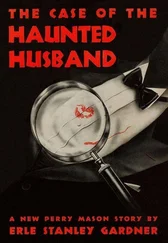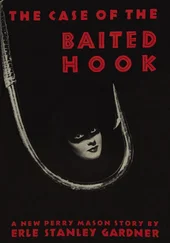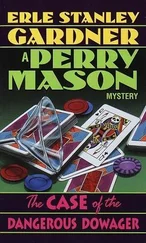Erle Gardner - The Case of the Lame Canary
Здесь есть возможность читать онлайн «Erle Gardner - The Case of the Lame Canary» весь текст электронной книги совершенно бесплатно (целиком полную версию без сокращений). В некоторых случаях можно слушать аудио, скачать через торрент в формате fb2 и присутствует краткое содержание. Город: New York, Год выпуска: 1937, Издательство: William Morrow, Жанр: Классический детектив, на английском языке. Описание произведения, (предисловие) а так же отзывы посетителей доступны на портале библиотеки ЛибКат.
- Название:The Case of the Lame Canary
- Автор:
- Издательство:William Morrow
- Жанр:
- Год:1937
- Город:New York
- ISBN:нет данных
- Рейтинг книги:4 / 5. Голосов: 1
-
Избранное:Добавить в избранное
- Отзывы:
-
Ваша оценка:
- 80
- 1
- 2
- 3
- 4
- 5
The Case of the Lame Canary: краткое содержание, описание и аннотация
Предлагаем к чтению аннотацию, описание, краткое содержание или предисловие (зависит от того, что написал сам автор книги «The Case of the Lame Canary»). Если вы не нашли необходимую информацию о книге — напишите в комментариях, мы постараемся отыскать её.
The Case of the Lame Canary — читать онлайн бесплатно полную книгу (весь текст) целиком
Ниже представлен текст книги, разбитый по страницам. Система сохранения места последней прочитанной страницы, позволяет с удобством читать онлайн бесплатно книгу «The Case of the Lame Canary», без необходимости каждый раз заново искать на чём Вы остановились. Поставьте закладку, и сможете в любой момент перейти на страницу, на которой закончили чтение.
Интервал:
Закладка:
“What did you do with the driving license?”
“I returned it to him.”
“And he knew who he was at that time?”
“Oh, yes, he remembered his identity and was able to discuss matters intelligently.”
“Now, Doctor, after leaving the hospital, this man disappeared.”
“So I am given to understand.”
“He was next found pinned under a wrecked automobile at the bottom of a precipitous canyon in the Santa Monica Mountains. The very severe injuries he had sustained had evidently killed him almost instantly, as will be shown by the testimony of the autopsy surgeon.”
“Yes,” Dr. Wallace said, “I noticed in making even a superficial examination that the skull had been completely crushed.”
“There were also numerous other internal injuries and broken bones. Now, Doctor, I want to know if it’s possible that the patient wasn’t cured of this amnesia that you mentioned, but was wandering around in sort of a daze.”
“Absolutely not,” Dr. Wallace said positively, and somewhat belligerently. “When I discharge a patient as cured, he’s cured. If there had been any possibility of an immediate recurrence of this condition, I would not have discharged him. Of course, you’ll understand, however, if there’d been some independent shock, some other injury, perhaps, it is possible that another and separate traumatic amnesia might have developed, but it would have been entirely separate and distinct. Of course, there’s nothing except the law of averages which prevents a man who has been run over by an automobile and treated by me going out and immediately becoming involved in another automobile accident. Yet they are separate and distinct accidents.”
“We understand that,” Scanlon said. “Now, what can you tell us about the identification you have made?”
“Well, in view of the condition of the cadaver,” Dr. Wallace observed, “my identification must, of course, be predicated upon certain matters of circumstantial evidence. For instance, it has been definitely established that the man who gave me the name of Carl Packard at the hospital, and who apparently lived in Altaville, was, in reality, an investigator for the Board of Fire Underwriters, named Jason Braun. He had apparently taken the alias of Carl Packard for the purpose of facilitating some of his investigations, and, having recovered his memory as to his alias, he naturally remembered his reason for concealing his true identity. Which is why he never once mentioned the name of Jason Braun to me, but agreed with me in the assumption he was Carl Packard of Altaville.
“Now, the Board of Fire Underwriters has its investigators all fingerprinted and, despite the partial decomposition of the cadaver, the ridges and whorls of the fingers can be readily ascertained. While I am not a fingerprint expert, I am an anatomist and I have carefully compared the fingerprints of the cadaver with those of Jason Braun. Having first assured myself that the man whom I treated was in reality Jason Braun, I have no hesitancy in identifying that man as being one and the same person with the cadaver lying at present in the undertaking parlors adjoining this room.”
“I think that’s all, Dr. Wallace,” Scanlon said.
“Just a moment,” Perry Mason observed. “Might I have the indulgence of the coroner in asking one or two questions?”
The coroner nodded.
“At the time this man, Packard, or Braun, whichever you wish to call him, recovered consciousness at the hospital — that is, when he recovered his knowledge of his identity — did he discuss the accident with you, Doctor?”
“He did.”
“What did he say about it?”
“He said that he had seen something in the window of a house on his right which had caused him to focus all of his attention on that window and he neglected to look where he was going; that suddenly he realized some huge bulk was towering on his left. He swung his eyes back to the road in time to see this big moving van just about to make a turn into Fourteenth Street. He tried to apply his brakes, but by that time it was too late. The moving van hit him and the two cars swung into the curb where Packard lost consciousness at the moment of impact.”
Rodney Cuff, on his feet, said suavely, “If the coroner please, I object to this form of inquiry. This man, Braun, or Packard, as the case may be, is now dead. He can never testify in any trial as to what he saw. Any attempt to perpetuate his testimony in the records by this indirect method is highly irregular, and calls for hearsay and a conclusion of the witness.”
“No, it doesn’t,” Scanlon said. “We’re trying to determine how this man met his death, whether he was murdered, whether he committed suicide, or whether he was driving a car in a sort of daze and went off the side of the mountain.”
“May it be understood, then, that this is the only purpose for which this evidence is admitted?” Cuff said. “That it’s not binding upon anyone in any other matter, and—”
“I think that’s the law anyway,” Scanlon pointed out. “However, we’re only trying to determine what caused this man to meet his death. And, so far as I know, at the present time, Mr. Cuff, there’s no charge against your client implicating him in any way with this death.”
“I resent that remark,” Cuff said quickly. “You are intimating that before the inquest is concluded evidence will indicate that my client, Mr. Driscoll, had something to do with the death.”
“I made no such implication,” the coroner said, “and as far as I’m concerned, you’re out of order and aren’t helping the rights of your client any. Sit down.”
Cuff started to say something, then changed his mind, and slowly sat down.
“Any further questions of the doctor?” Scanlon asked Perry Mason.
“I think that’s all,” Perry Mason said.
“Does the district attorney’s office wish to interrogate Dr. Wallace?” Scanlon inquired.
Overmeyer shook his head and said, “Not at present, anyway. We wish to interrogate the autopsy surgeon and the traffic officers who discovered the body— Just a moment, there is one question. Dr. Wallace, this man didn’t tell you anything at all which would indicate what he had seen in that window, did he?”
“He did not, beyond saying that it was something very startling or compelling, or something of that sort. I can’t recall his exact words. I remember that he seemed rather sheepish about it.”
“That’s all.”
Dr. Wallace walked down the aisle of the room which was being used for the inquest. Perry Mason said suddenly, “Just a moment, Doctor, I’d like to have you remain here for a few minutes. I don’t think it will be over five or ten minutes at the most. Would you mind taking that seat?”
Mason indicated a seat on the aisle which had been occupied but a moment before by Jackson, his law clerk. That seat was now vacant, and Dr. Wallace, frowning, looked at his wrist watch, said, “Very well, but I have some important cases at the hospital and would like to be released as soon as possible.”
“You will be, Doctor,” Scanlon said. “Just be seated for a moment.”
Dr. Wallace dropped into the chair. Jackson Weyman, who occupied the adjoining seat, turned the one eye visible through his bandages to stare curiously at the doctor.
“The next witness,” Coroner Scanlon announced, “will be Edward Bird, one of the traffic officers who came on the body at the scene of the accident.”
Edward Bird, advancing to be sworn, apparently enjoying the interest he aroused, stood very erect as he faced the jury, and made certain that the coat of his uniform was snugly fitting and unwrinkled. He adjusted the gun which hung at his hip from the wide brown belt, sat down, turned to the coroner and said, “Yes, sir.”
Читать дальшеИнтервал:
Закладка:
Похожие книги на «The Case of the Lame Canary»
Представляем Вашему вниманию похожие книги на «The Case of the Lame Canary» списком для выбора. Мы отобрали схожую по названию и смыслу литературу в надежде предоставить читателям больше вариантов отыскать новые, интересные, ещё непрочитанные произведения.
Обсуждение, отзывы о книге «The Case of the Lame Canary» и просто собственные мнения читателей. Оставьте ваши комментарии, напишите, что Вы думаете о произведении, его смысле или главных героях. Укажите что конкретно понравилось, а что нет, и почему Вы так считаете.
